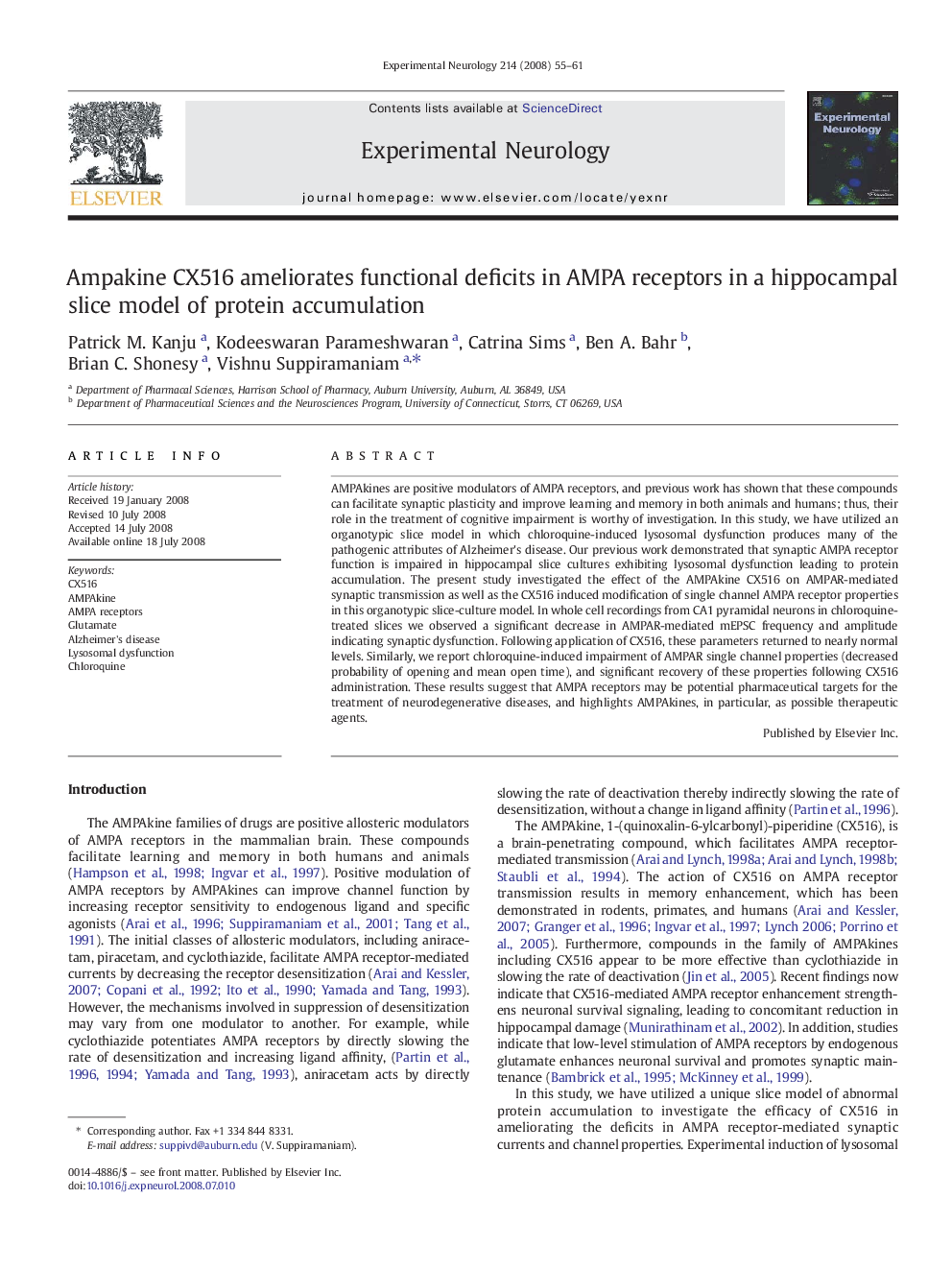| Article ID | Journal | Published Year | Pages | File Type |
|---|---|---|---|---|
| 3056693 | Experimental Neurology | 2008 | 7 Pages |
AMPAkines are positive modulators of AMPA receptors, and previous work has shown that these compounds can facilitate synaptic plasticity and improve learning and memory in both animals and humans; thus, their role in the treatment of cognitive impairment is worthy of investigation. In this study, we have utilized an organotypic slice model in which chloroquine-induced lysosomal dysfunction produces many of the pathogenic attributes of Alzheimer's disease. Our previous work demonstrated that synaptic AMPA receptor function is impaired in hippocampal slice cultures exhibiting lysosomal dysfunction leading to protein accumulation. The present study investigated the effect of the AMPAkine CX516 on AMPAR-mediated synaptic transmission as well as the CX516 induced modification of single channel AMPA receptor properties in this organotypic slice-culture model. In whole cell recordings from CA1 pyramidal neurons in chloroquine-treated slices we observed a significant decrease in AMPAR-mediated mEPSC frequency and amplitude indicating synaptic dysfunction. Following application of CX516, these parameters returned to nearly normal levels. Similarly, we report chloroquine-induced impairment of AMPAR single channel properties (decreased probability of opening and mean open time), and significant recovery of these properties following CX516 administration. These results suggest that AMPA receptors may be potential pharmaceutical targets for the treatment of neurodegenerative diseases, and highlights AMPAkines, in particular, as possible therapeutic agents.
